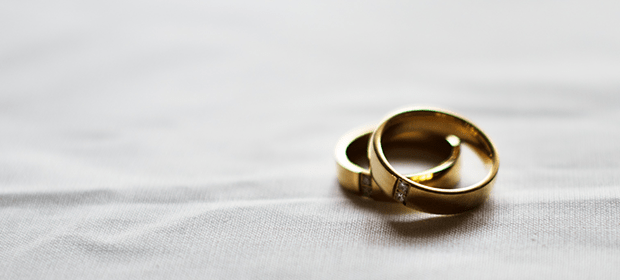If you’re married or in a civil partnership, you may be able to benefit from this tax relief scheme, transferring some of your tax free allowance to your spouse and reducing their tax bill.

It’s estimated that around 1 million couples who quality for the marriage tax allowance aren’t claiming this benefit, so it’s well worth checking if you think you may be eligible.
What Is Marriage Allowance?
Marriage Allowance is a government scheme that’s designed to offer married couples and those in a civil partnership income tax relief. It was set up in 2015 and works by allowing one person in the relationship to ‘give’ part of their Personal Allowance to the other, in order to reduce the amount they pay in tax.
Need a reminder on what Personal Allowance is? This is the amount of income that you don’t have to pay tax on, and it changes slightly every year. For 2018/19, the standard Personal Allowance amount is £11,850, so if you or your partner earn less than this amount a year, you may benefit from claiming Marriage Allowance.
Who Is Eligible?
To qualify for Marriage Allowance:
- You need to be married or in a civil partnership
- One of you needs to earn less than the Personal Allowance amount (currently £11,850) or not pay income tax
- The other needs to be paying income tax at the basic rate (which currently means a salary of between £11,851 and £46,350)
If your partner has passed away since 5 April 2015, but you would otherwise have been eligible, you can still claim Marriage Allowance.
How Much Could You Save?
At the moment, the scheme allows you to transfer 10% of your Personal Allowance to your partner – that’s £1,185 for 2018/19, which reduces their tax by up to £238. However, you can also backdate claims as far back as when the scheme started on 5 April 2015, so if you have been eligible that entire time, you could claim as much as £900 overall.
There’s a marriage allowance calculator on the government’s website to help you figure out how much tax you could save.
How Do You Apply?
You can apply online – the person with the lowest income should make the claim. You can do this through the .gov website.
You’ll need your National Insurance number, that of your partner’s, and proof of identity (eg a passport, payslips or a P60).
If successful, HMRC will backdate the claim to the start of this tax year and either change the tax code for you or your partner (whoever is receiving the 10% Personal Allowance money) or adjust as part of the annual Self Assessment tax return. You’ll be reimbursed for any applicable previous tax years by cheque.
If you need help, please don’t hesitate to contact us.

 © 2019 Warr & Co Chartered Accountants. Warr & Co Chartered Accountants is a member of The Institute of Chartered Accountants in England & Wales (ICAEW). Whilst the information detailed here is updated regularly to ensure it remains factually correct, it does not in any way constitute specific advice and no responsibility shall be accepted for any actions taken directly as a consequence of reading it. If you would like to discuss any of the points raised and / or engage our services in providing advice specific to your personal circumstances, please feel free to contact any one of the partners on 0161 477 6789 or contact us via our website forms. Warr & Co Chartered Accountants are registered to carry our audit work in the UK, our audit registration number is C002961684, for more information please visit www.auditregister.org.uk.
© 2019 Warr & Co Chartered Accountants. Warr & Co Chartered Accountants is a member of The Institute of Chartered Accountants in England & Wales (ICAEW). Whilst the information detailed here is updated regularly to ensure it remains factually correct, it does not in any way constitute specific advice and no responsibility shall be accepted for any actions taken directly as a consequence of reading it. If you would like to discuss any of the points raised and / or engage our services in providing advice specific to your personal circumstances, please feel free to contact any one of the partners on 0161 477 6789 or contact us via our website forms. Warr & Co Chartered Accountants are registered to carry our audit work in the UK, our audit registration number is C002961684, for more information please visit www.auditregister.org.uk.